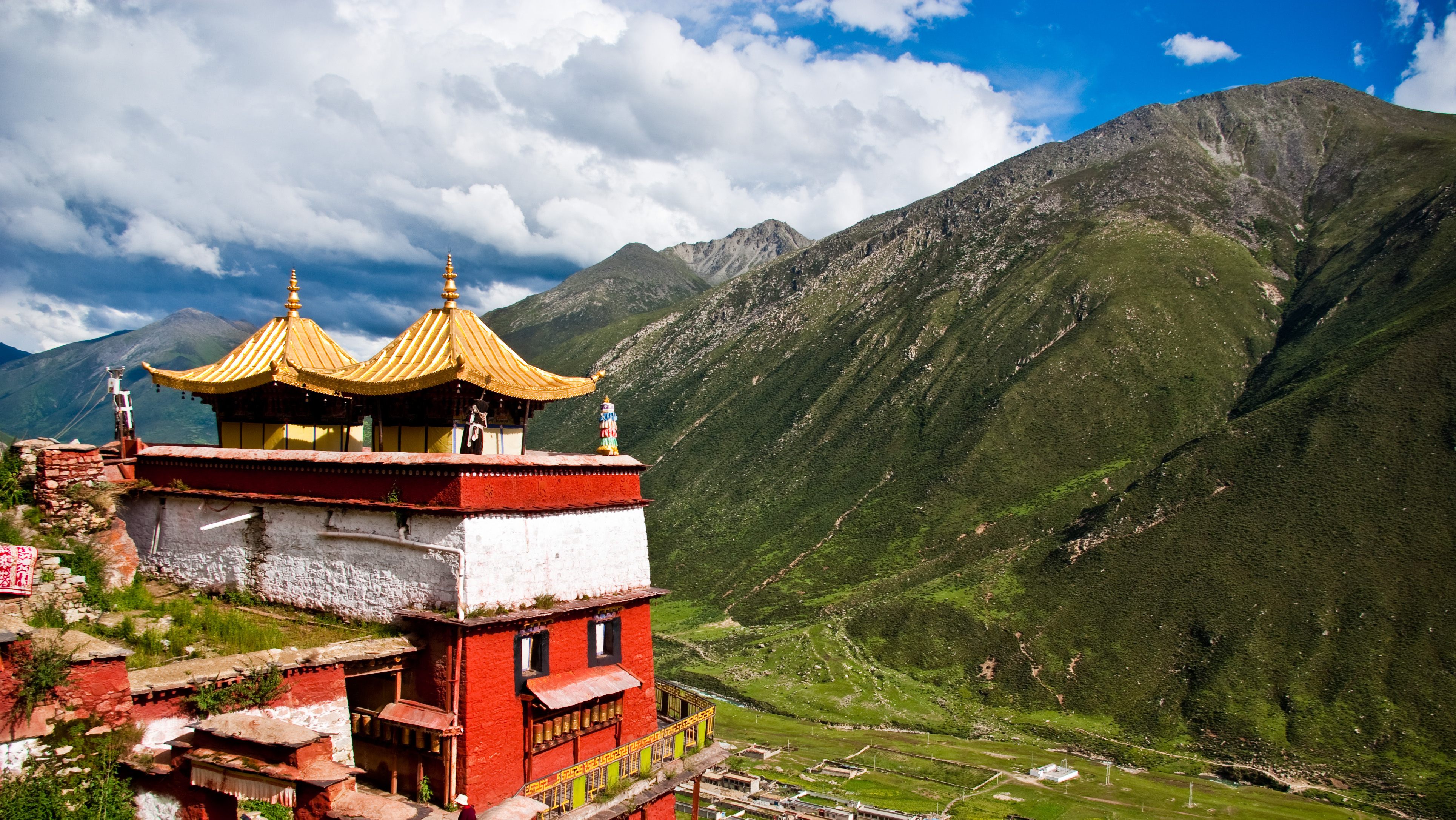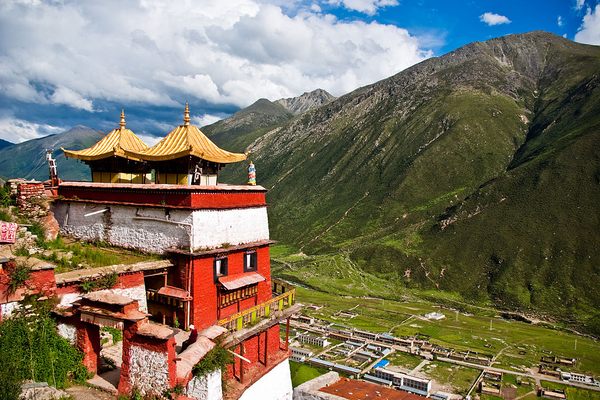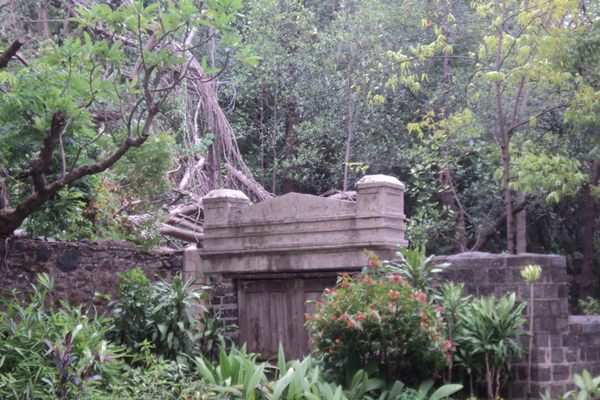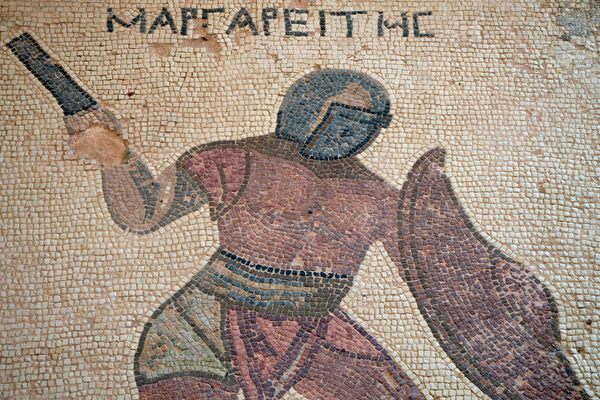What Remains of Asia’s Traditional Sky Burial Sites
Five dramatic places dedicated to returning corpses to nature.

The ancient ritual of leaving corpses exposed to the elements has long been believed to be a sacred method of interment. In this traditional practice, bodies are left outdoors atop towers or mountainside platforms, where they can decompose in the open air and carrion birds can feed on the flesh until only the bones remain.
While this may sound extraordinary to some modern ears, defleshing was considered a natural and efficient means of disposing of the dead for thousands of years. It’s been practiced in Zoroastrian communities in Iran and India, and in certain Buddhist regions of Tibet, China, and other nations throughout Asia.
As populations have grown in these regions, corpse exposure sites have became more scarce, and more modern forms of burial have gained in popularity. There are only a handful of remaining sites around the world where outdoor burial rites are still practiced, or where the remains of these traditional structures can be seen, long since abandoned.

Chilpik Tower of Silence
NUKUS, UZBEKISTAN
Situated on the banks of the Amu Darya river in the Chilpik region of Karakalpakstan, an autonomous territory of Uzbekistan, is an ancient dakhma believed the first one ever built. Constructed somewhere between the 1st century BCE and 1st century CE, this Tower of Silence is especially significant as local legend has it that Zarathustra began writing the ancient Zoroastrian scriptures in this region.
In the Zoroastrian tradition, an ancient religion that has a strong following in some pockets of Asia, a corpse is considered impure and should not be allowed to pass on its impurity to the elements around it, especially the element of fire, which is believed to be holy. Thus, dakhmas, or Towers of Silence, were built for laying the dead to rest.
Dakhmas are raised, rounded structures, with a central well. The body of a deceased Zoroastrian is placed on depressions in the circular platform and exposed to both the elements and birds of prey, which feed on the flesh, leaving behind the bones. The use of these towers was first documented more than 2,000 years ago, though the English term “Tower of Silence” didn’t come into use until the 19th century, when it was coined by a British translator stationed in colonial India.
The Chilpik dakhma has become a popular symbol in Karakalpakstan, even appearing on the republic’s coat of arms. While it has not been used for burial rituals for centuries, the structure is a vital part of local lore and history in the region.

Yazd Tower of Silence
YAZD, IRAN
The Tower of Silence in Yazd, Iran, is another example of an ancient dakhma no longer in use—though until just 40 years ago, corpses could still be found on top of the structure, slowly disintegrating or being picked apart by desert vultures.
As Iran developed and urbanized, dakhmas became located increasingly closer to city limits, which severely curtailed their use as a purification process. In the 1970s, they were deemed illegal, forcing orthodox Zoroastrians to adapt to new burial methods. Many in the Zoroastrian community have moved to burying bodies beneath concrete to keep out contaminants.

Mumbai Tower of Silence
MUMBAI, INDIA
The Zoroastrian faith travelled to India between the 8th and 10th centuries, when its followers migrated to the country to avoid persecution after the Arab invasion of Persia. Today, India is still home to a small but affluent Parsi community, as the Zoroastrians came to be in called in the country. Mumbai has one of the largest populations of Parsis.
The Mumbai dakhma is located within city limits, but set deep inside a 54-acre forest, a complex locally called the doongerwadi and still used by Parsis in the city. The Tower of Silence in Mumbai is facing problems, though, due to the fact that the local vulture population has dwindled in recent years. Without sufficient birds of prey to feed on the corpses, the excarnation process is delayed or even left incomplete.

Drigung Monastery
LHASA, TIBET
In the mountains of Tibet, and in some provinces of China, Bhutan, Mongolia, and Nepal, a ritual similar to the Zoroastrian Towers of Silence takes place: the tradition of jhator, or sky burial.
This form of interment is a part of the Vajrayana Buddhist tradition, dictated by both religious traditions as well as practical concerns—in mountainous regions, sky burials were a more convenient form of burial when fuel for cremations was scarce, and the terrain was too rocky to dig graves.
The sky burial practice was briefly banned in the 1960s but later came back into being. But logistical and sanitary concerns have triggered the slow decline of the jhator custom in favor of cremation, and today active sky burial sites are incredibly rare.
The Drigung Thil monastery in Tibet is home to one of the few remaining and most famous sky burial sites, and bodies from the surrounding valley are sent here. The death ceremonies are performed by the monks every afternoon, and the following morning the bodies are carried to the site, which is situated at 14,975 feet, high on the mountaintop, surrounded by small stupas and temples. Himalayan vultures are invited to feed on the flesh and anything that remains is burned and offered to the sky in another ritual.

Trunyan
TEMBUKU, INDONESIA
One community in Bali does sky burials slightly differently, placing the bodies below a sacred banyan tree to decompose in the open air.
The walk up to the Trunyan cemetery in Tembuku is littered with skulls and human bones that have been set into stones. The villagers who adhere to this practice belong to a group known as the Bali Aga, people who have descended from the original Balinese natives. Their unique interment traditions are believed to go back hundreds of years.



















Follow us on Twitter to get the latest on the world's hidden wonders.
Like us on Facebook to get the latest on the world's hidden wonders.
Follow us on Twitter Like us on Facebook